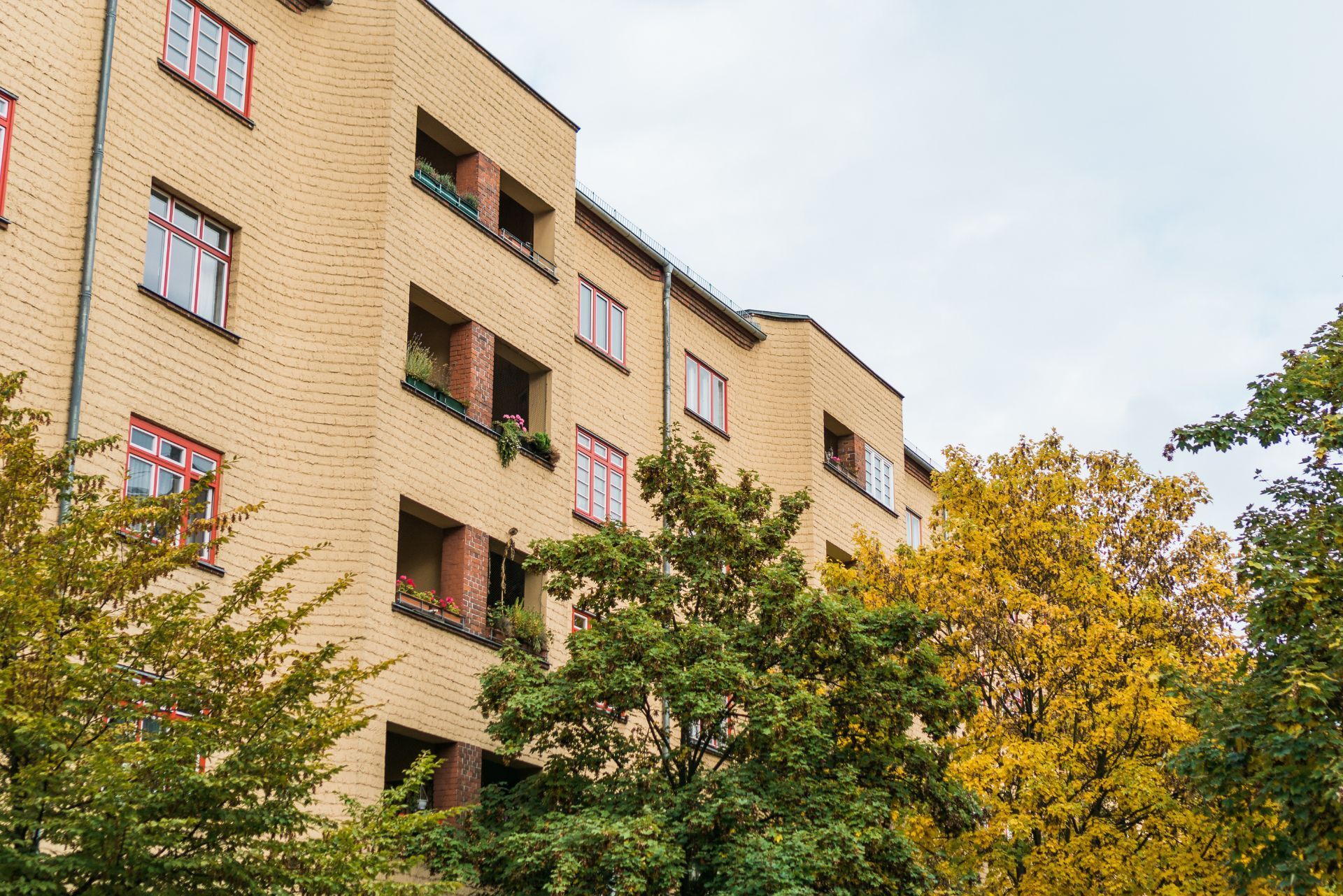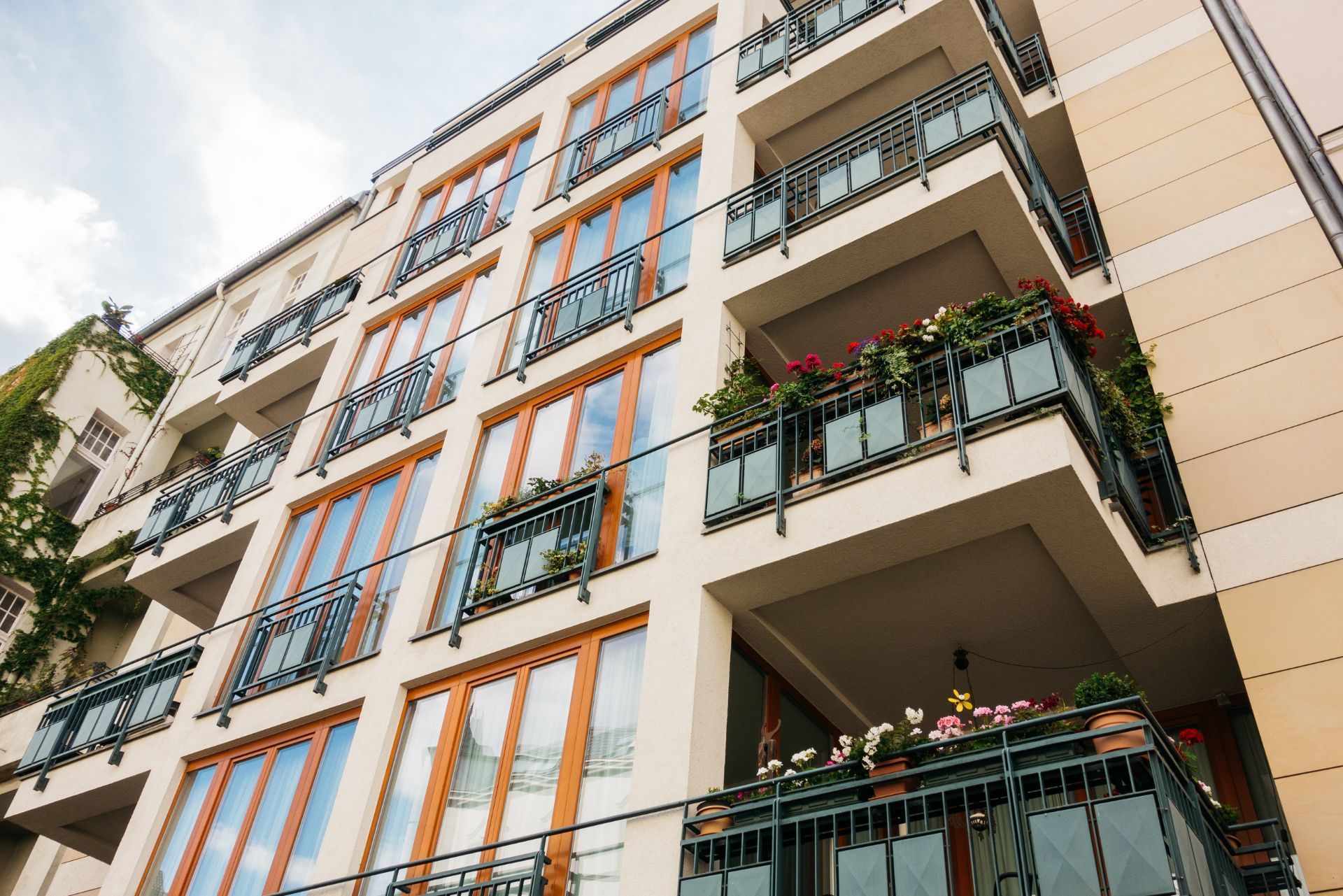Top 3 Recommended Policies

Investing in Class B multifamily apartments in Alabama, particularly in vibrant markets like Birmingham, offers promising opportunities but also comes with unique challenges—especially when it comes to insurance. Navigating the complexities of multifamily apartment insurance requires a deep understanding of market trends, risk factors, and cost drivers that directly impact operating expenses and investment returns.
With Birmingham’s multifamily market seeing significant growth and evolving risk landscapes, this article breaks down everything property owners and investors need to know about insurance for Class B multifamily apartments in Alabama. From market dynamics to the impact of resilient construction and rising insurance premiums, readers will gain valuable insights to make informed decisions.
For a detailed perspective on recent market absorption rates and construction trends, the Matthews Real Estate Investment Services Q1 2025 report offers an excellent resource.
Understanding the Alabama Class B Multifamily Market
Class B multifamily properties typically represent well-maintained apartments that are a step below the newest Class A buildings but still provide solid value and appeal to a broad tenant base. In Alabama, and Birmingham specifically, this segment has been experiencing notable momentum.
In the first quarter of 2025, Birmingham’s multifamily market recorded a net absorption of 67 units, a figure that, when annualized, significantly outpaces the city’s 10-year average of 570 units absorbed per year. This strong demand is driving investor interest and construction activity alike.
Moreover, apartment construction in Birmingham nearly tripled in 2024, with 1,711 new units completed—a staggering 198.1% increase from the previous year. This surge reflects confidence in the market’s growth potential but also introduces new considerations for insurance as more properties enter the risk pool.
The Role of Operating Expenses in Insurance Costs
Operating expenses form a substantial part of an apartment community’s budget, with insurance being a significant component. According to the National Apartment Association, more than a quarter of every rent dollar—27 cents—goes toward operating expenses, including insurance premiums. This highlights the critical importance of managing insurance costs effectively to maintain profitability.
For Class B properties, which often operate on tighter margins than Class A assets, understanding how insurance impacts cash flow is essential. Rising premiums can erode returns if not anticipated and managed strategically. Additionally, the competitive landscape of the Birmingham multifamily market means that property owners must not only focus on insurance costs but also on enhancing the overall tenant experience to retain residents and minimize turnover. Features such as updated amenities, responsive maintenance services, and community-building activities can significantly influence tenant satisfaction and, consequently, the financial health of a property.
Furthermore, the evolving landscape of insurance products tailored for multifamily housing presents both challenges and opportunities. As climate change and natural disasters become more prevalent, insurers are increasingly factoring in environmental risks when calculating premiums. This shift necessitates that property owners in Alabama stay informed about potential changes in coverage options and pricing structures. By proactively engaging with insurance brokers and exploring
risk mitigation strategies, such as investing in sustainable building practices or disaster preparedness plans, multifamily property owners can not only safeguard their investments but also enhance their appeal to environmentally conscious tenants.

Why Insurance Premiums Are Rising in Alabama
Insurance premiums for multifamily properties in Alabama, especially Class B apartments, have seen upward pressure in recent years. One of the primary drivers is the decreased capacity of reinsurance companies, which provide insurance to insurers themselves. This reduction in reinsurance availability leads to higher costs passed down to property owners.
Max Sharkansky, Managing Partner at Trion Properties, explains that this decreased reinsurance capacity has been a key factor behind the surge in multifamily property insurance premiums. As insurers face greater financial risk, they adjust pricing accordingly, which directly affects property owners.
Additionally, the Federal Reserve Bank of Minneapolis has highlighted that rising property insurance costs are placing significant stress on multifamily housing. Many owners are forced to accept policies with large deductibles or coverage terms that do not fully mitigate their financial risk, creating potential vulnerabilities.
Impact on Class B Apartment Owners
For owners of Class B multifamily apartments, these rising insurance costs can be particularly challenging. Unlike Class A properties with stronger financial buffers, Class B owners may find it harder to absorb premium increases without affecting tenant rents or overall profitability.
Given that insurance expenses are a fixed cost, owners must carefully evaluate their insurance policies and explore options such as risk mitigation strategies or resilient construction to help control long-term costs. This may include investing in property upgrades that enhance safety and reduce risks, such as installing fire suppression systems or improving drainage to prevent water damage. Additionally, owners might consider forming cooperative groups to negotiate better rates collectively, leveraging their combined purchasing power to secure more favorable terms from insurers.
Furthermore, the impact of climate change cannot be overlooked, as Alabama has experienced an increase in severe weather events, which further complicates the insurance landscape. As natural disasters become more frequent, insurers are more likely to raise premiums to cover potential losses, creating a cycle that can be difficult for property owners to navigate. This situation underscores the importance of proactive risk management and the need for owners to stay informed about market trends and legislative changes that could affect their insurance landscape.
The Economic Value of Resilient Construction
One promising approach to managing insurance costs and improving investment returns is resilient construction. This method involves building or retrofitting properties to better withstand natural disasters and other risks, which can lead to lower insurance premiums and reduced damage-related expenses. By incorporating advanced materials and design techniques, resilient construction not only enhances the durability of structures but also contributes to the overall sustainability of communities, making them more attractive to both residents and investors alike.
Dr. Lars Powell, Director of the Alabama Center for Insurance Information and Research, emphasizes that resilient construction offers impressive returns on investment not only in coastal areas but also inland locations like Birmingham. This is especially relevant given Alabama’s exposure to severe weather events. The strategic implementation of resilient features, such as storm-resistant windows, elevated foundations, and reinforced roofs, can significantly mitigate the impact of storms, floods, and other environmental challenges, thus ensuring that properties maintain their value over time.
A study from the University of Alabama found that the return on investment for resilient construction of multifamily properties can be as high as 72%. This substantial figure underscores the financial benefits of investing in fortified building practices that reduce risk and insurance costs over time. Furthermore, resilient construction can enhance the marketability of properties, as potential tenants and buyers increasingly prioritize safety and sustainability in their housing choices. This growing demand can lead to higher occupancy rates and rental prices, further boosting the economic viability of such investments.
Investors and property managers considering upgrades or new developments should weigh the upfront costs of resilient construction against the potential savings in insurance premiums and reduced operational disruptions. Additionally, they should consider the long-term benefits of resilience, such as lower maintenance costs and increased property longevity. As climate change continues to escalate the frequency and severity of natural disasters, the importance of resilient construction will only grow, positioning it as a crucial element in future real estate development strategies. By prioritizing resilience, stakeholders can not only protect their investments but also contribute to the creation of safer, more sustainable communities that can thrive in the face of adversity.
Current Cap Rates and Market Implications
Cap rates are a key metric for investors evaluating multifamily properties, reflecting the expected rate of return on an investment. In Birmingham’s Class B multifamily sector, cap rates have been compressing, signaling strong demand and competitive pricing. This trend not only highlights the attractiveness of the Birmingham market but also indicates a shift in investor sentiment as they seek out stable returns in an increasingly volatile economic landscape.
In Q1 2025, multifamily cap rates in Birmingham compressed by 7 basis points, with Class B properties averaging a cap rate of 5.88%. This tightening suggests that investors are willing to accept lower yields due to confidence in the market’s stability and growth prospects. The influx of new residents, driven by job growth and a vibrant local economy, has fueled this demand, making Birmingham a focal point for multifamily investment. As more people move to the area, the need for quality housing continues to rise, further supporting the upward trajectory of property values.
However, with rising insurance premiums and operating expenses, the net returns on these investments could be squeezed unless owners proactively manage costs. Understanding the interplay between cap rates, insurance expenses, and property performance is crucial for making sound investment decisions. Investors are increasingly leveraging technology and data analytics to optimize their property management strategies, ensuring that they can mitigate costs while maximizing tenant satisfaction and retention.
Balancing Growth and Risk
The rapid growth in apartment construction and absorption rates indicates a robust market, but it also means increased exposure to risk, especially if insurance coverage is inadequate or overly costly. Owners must balance the opportunity for growth with prudent risk management practices, including securing appropriate insurance and investing in resilient property features. This includes incorporating sustainable building practices and energy-efficient systems that not only reduce operational costs but also appeal to environmentally conscious tenants.
Moreover, as the multifamily landscape evolves, investors are also paying close attention to demographic shifts and lifestyle preferences. The rise of remote work has changed the way people view their living spaces, leading to a greater demand for amenities such as coworking spaces and high-speed internet access. By adapting to these trends, property owners can enhance their competitive edge and ensure their investments remain attractive in a dynamic market. Additionally, fostering community engagement through events and partnerships can further solidify tenant loyalty, creating a stable income stream amidst the challenges of fluctuating cap rates and market conditions.
Practical Tips for Managing Multifamily Apartment Insurance in Alabama
Given the complexities and rising costs of insurance, Class B multifamily apartment owners in Alabama can adopt several strategies to optimize their insurance position:
- Shop Around and Negotiate: Insurance premiums vary widely between providers. Regularly reviewing and negotiating policies can uncover better rates or coverage options.
- Invest in Risk Mitigation: Implementing safety features, security systems, and resilient construction can reduce the likelihood and impact of claims, potentially lowering premiums.
- Understand Policy Details: Scrutinize deductibles, coverage limits, and exclusions to ensure adequate protection without overpaying for unnecessary coverage.
- Work with Experienced Brokers: Insurance brokers specializing in multifamily properties can provide valuable market insights and help tailor policies to specific property needs.
- Monitor Market Trends: Stay informed about local market conditions, regulatory changes, and insurance industry shifts to anticipate and adapt to cost changes.
By proactively managing insurance and related risks, owners can protect their investments and maintain healthy operating margins despite market pressures.
Additionally, it is crucial for property owners to engage in regular training and education regarding insurance matters. Hosting workshops or seminars for property management staff can enhance their understanding of risk management strategies and claims processes. This not only empowers the team but also fosters a culture of safety and awareness, which can lead to fewer incidents and claims over time. Furthermore, maintaining open lines of communication with tenants about safety protocols and insurance coverage can help mitigate risks and encourage responsible behavior within the community.
Moreover, consider leveraging technology to streamline insurance management. Utilizing property management software that includes insurance tracking features can help owners keep up with policy renewals, deadlines, and compliance requirements. This proactive approach can prevent lapses in coverage and ensure that all necessary documentation is readily available when needed. By embracing these technological advancements, multifamily apartment owners can enhance their operational efficiency while simultaneously safeguarding their investments against unforeseen circumstances.

Conclusion: Navigating Insurance Challenges in Alabama’s Multifamily Market
Alabama’s Class B multifamily apartment market, particularly in Birmingham, is thriving with strong absorption rates and a surge in new construction. However, rising insurance premiums driven by decreased reinsurance capacity and increased risk exposure present challenges that owners must address strategically.
Investing in resilient construction offers one of the most effective ways to improve returns and manage insurance costs, with studies showing potential ROI as high as 72%. Meanwhile, understanding operating expenses, cap rate trends, and insurance market dynamics is essential for maintaining profitability.
For those seeking to dive deeper into the economic impacts of resilient multifamily construction, the University of Alabama study featured by Reinsurance News provides valuable insights.
Ultimately, navigating Alabama’s multifamily insurance landscape requires a combination of market knowledge, risk management, and strategic investment—ensuring that Class B apartment owners can thrive in a competitive and evolving environment.
Contact Us


